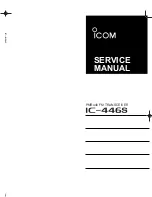
Chapter 2 Installation Preparations
2-5
Configuration
Amplification
Output
Working
Voltage
1X Maximum Power
Consumption (W)
DO Maximum Power
Consumption (W)
2-carrier 1-sector
40W/carrier
-48V
About 1400W
About 1400W
3-carrier 1-sector
40W/carrier
-48V
About 1400W
About 1400W
5-carrier 1-sector
40W/carrier
-48V
About 2000W
About 2000W
7-carrier 1-sector
40W/carrier
-48V
About 2000W
About 2100W
1-carrier 3-sector
40W/carrier
-48V
About 2500W
About 2600W
2-carrier 3-sector
40W/carrier
-48V
About 2600W
About 2600W
3-carrier 3-sector
40W/carrier
-48V
About 2600W
About 2700W
4-carrier 3-sector
40W/carrier
-48V
About 2600W
About 2700W
5-carrier 3-sector
40W/carrier
-48V
About 4400W
About 4500W
7-carrier 3-sector
40W/carrier
-48V
About 4500W
About 4600W
8-carrier 3-sector
40W/carrier
-48V
About 4500W
About 4700W
1-carrier 6-sector
40W/carrier
-48V
About 4300W
About 4400W
2-carrier 6 -sector
40W/carrier
-48V
About 4400W
About 4500W
3-carrier 6-sector
40W/carrier
-48V
About 4500W
About 4600W
4-carrier 6-sector
40W/carrier
-48V
About 4500W
About 4700W
2.1.4 Checking the Grounding System
The grounding regulations and resistance requirements (including the lightning
protection requirements) are as follows:
The communication equipment should be well grounded for reliable operation. Good
grounding ensures lightning protection and interference resistance. The grounding
cables in the equipment room should be routed in a radiating or flat way. Three
independent grounding cables should be used: The protection ground of the DC power
distribution system, the work ground of the power system and the lightning protection
ground.
The equipment adopts joint grounding with the grounding resistance less than 1
Ω
.
Generally, the grounding resistance of BTSB should be less than 5
Ω
. The engineering
requires the grounding resistance to be the smallest possible. The magnitude of
grounding resistance is affected by grounding post resistance, leading wire resistance,
contact resistance between the grounding post and soil as well as the soil type. The
greatest impact on grounding resistance comes from soil type. In areas with poor soil
conditions, some resistance-reducing agent (such as propenamide) may be added
around the grounding stake to meet the requirements. Changes in temperature will also
cause variations in resistance. In cold areas, the impact of temperature on the resistance
Summary of Contents for ZXC10 BTSB I1
Page 4: ......
Page 16: ......
Page 22: ... ii Table C 2 1 BTSB Board Indicators C 2 ...
Page 76: ......
Page 91: ...Chapter 7 Cable Installation in Cabinet 7 15 Fig 7 3 5 RF Cable Interface in RFS ...
Page 96: ......
Page 106: ......
Page 114: ......
Page 157: ...Chapter 12 Board Installation 12 11 Fig 12 5 1 Positions of Boards ...
Page 158: ......
Page 174: ......
Page 180: ......
















































